Top 10 Flying Cars: The Future Takes Flight
the reality is that flying cars are now a possibility, and they could shape how we commute, work, and live in the coming decades.
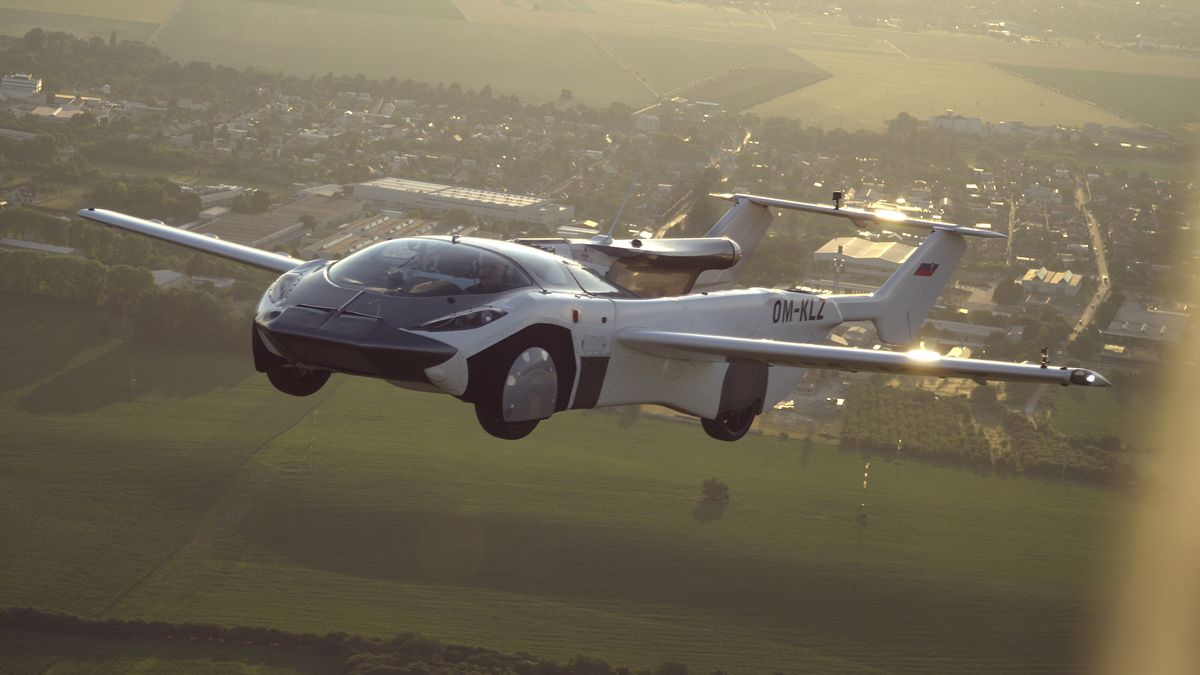
Flying cars have long been a fascination for sci-fi enthusiasts and futurists alike, capturing the imagination of innovators and the public for decades. While they may have remained mere fantasies for a long time, the reality is that flying cars are now a possibility, and they could shape how we commute, work, and live in the coming decades.
Short history of flying cars
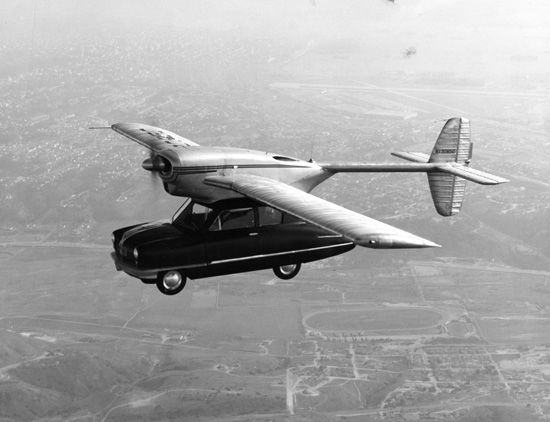
Convair Model 118
a prototype flying car from 1947
The idea of a flying car has been around for over a century, and many prototypes have been built since the early 20th century, using a variety of flight technologies. In 1959, the Canadian and British military developed the Avrocar, the first flying car specifically intended for military use. The machine looked more like a flying saucer than a car. Far from the UFO design of the Avrocar was the adorable Aerocar, a concept created by aeronautical engineer Moulton Taylor.
Here are the top 10 flying cars that are making a buzz in the autonomous industry :
KLEIN VISION AIRCAR
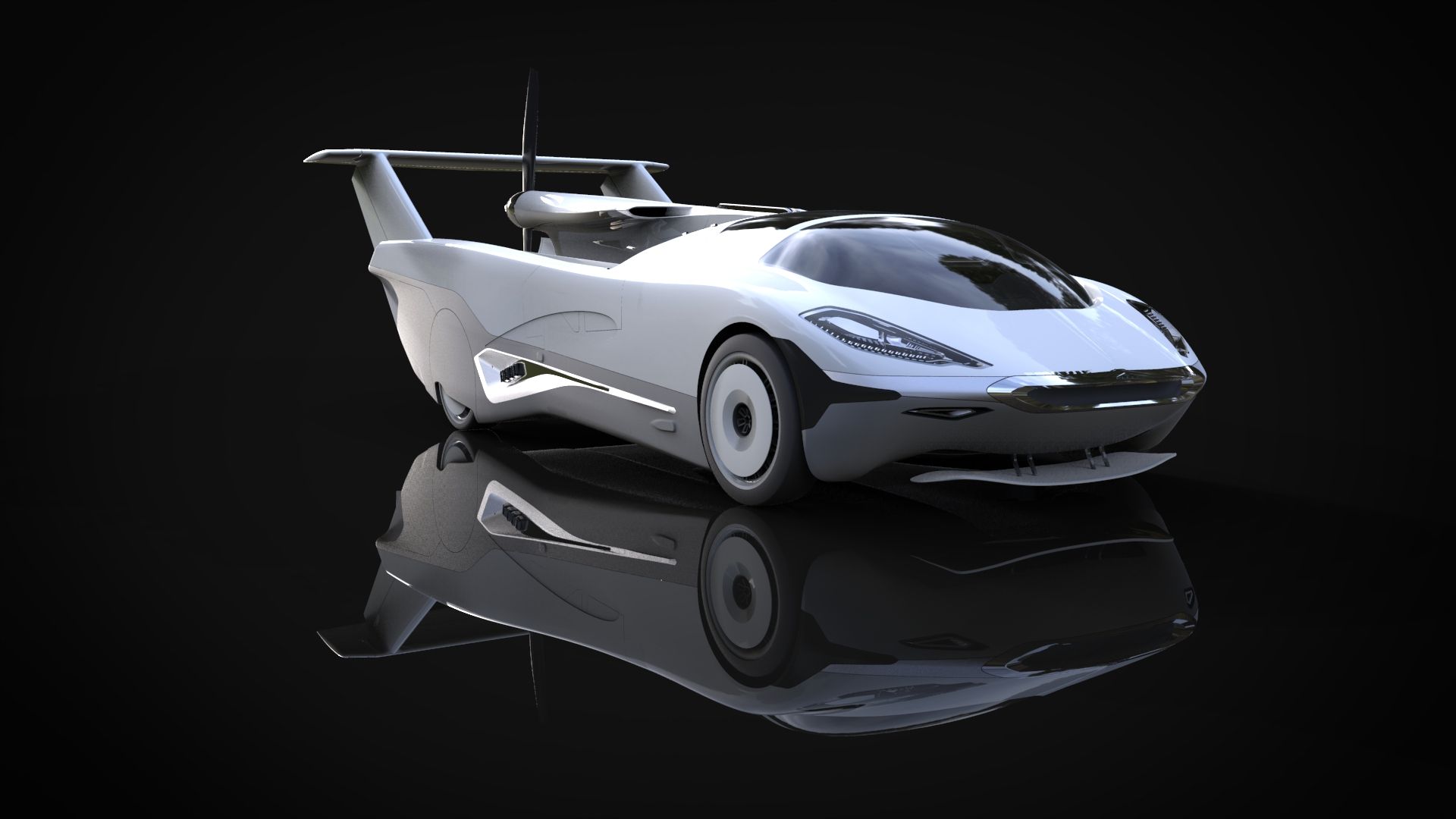
KLEIN VISION AIRCAR
$550,000 to $1.1 million
The Klein Vision AirCar is a two-seat flying car designed by Slovakian designer Professor Štefan Klein and made in Slovakia. It was type certified as an aircraft in January 20221. The AirCar is a hybrid vehicle that can be driven on the road and flown in the air. It has a gasoline-powered 1.6-liter BMW engine that can generate 160 horsepower and a fixed-propeller that gives a little more power. It can reportedly fly up to 8,200 feet at a top speed of 118 mph.
The AirCar will be available globally for consumers to purchase within the next year, but only licensed pilots will be eligible to actually fly it. The asking price of the innovation will range between $550,000 to $1.1 million, and will depend based on the features that the model has.
AEROMOBILE 4.0
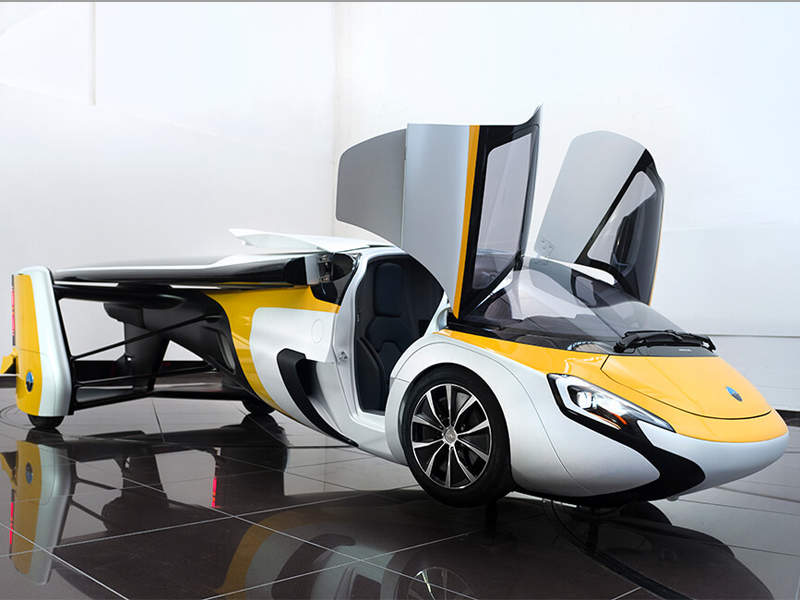
AEROMOBILE 4.0
$1.3 million and $1.6 million
The AeroMobil 4.0 Flying Car was introduced at the International Paris Air Show held at Paris–Le Bourget Airport, in June 2017. The vehicle is installed with latest turbocharging technologies and systems to attain additional power and altitude. The vehicle is built using monocoque construction techniques. The automotive configuration has a length of 5.9m, a width of 2.2m and height of 1.5m, while the aircraft platform measures 5.8m-long, 8.8m-wide and 1.4m-high.
The vehicle can fly at a top speed of 360km/h, while the top speed on the road is 160km/h. The maximum take-off weight of the vehicle is 960kg, while the useable load and the fuel capacity are 240kg and 90l respectively. It generates a maximum power of 300hp. the vehicle is expected to be available for purchase in 2023, with a price tag of $1.3 million and $1.6 million.
PAL-V Liberty
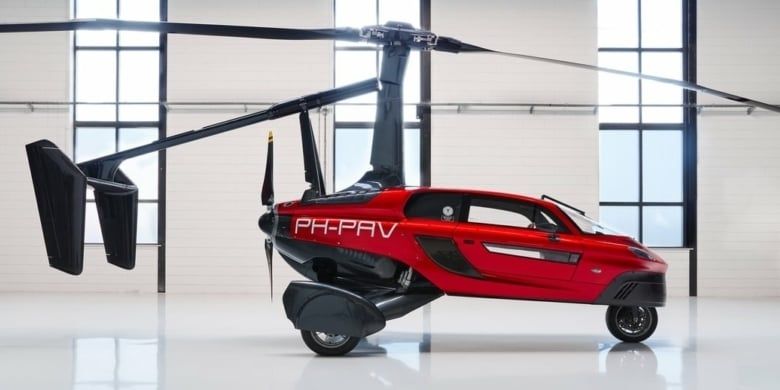
PAL-V Liberty
$400,000
The PAL-V Liberty is a combination of two-seat three-wheeled car and an autogyro, or gyroplane under development by PAL-V of the Netherlands. Both a driver's license and an autogyro pilot's license are required to operate the vehicle. It has a maximum take-off weight of 910 kg and can fly at the rate of 160 km/h. The 100 hp supercar can cover a maximum range of 500 kilometers, with the fuel lasting for 4.3 hours at maximum capacity.
We’re told first customer deliveries will take place in 2024. The prototype PAL-V Liberty carried out a successful test flight in 2020, and the vehicle is expected to be available for purchase in 2024, with a price tag of $1.8 million.
ALAUDA MK3
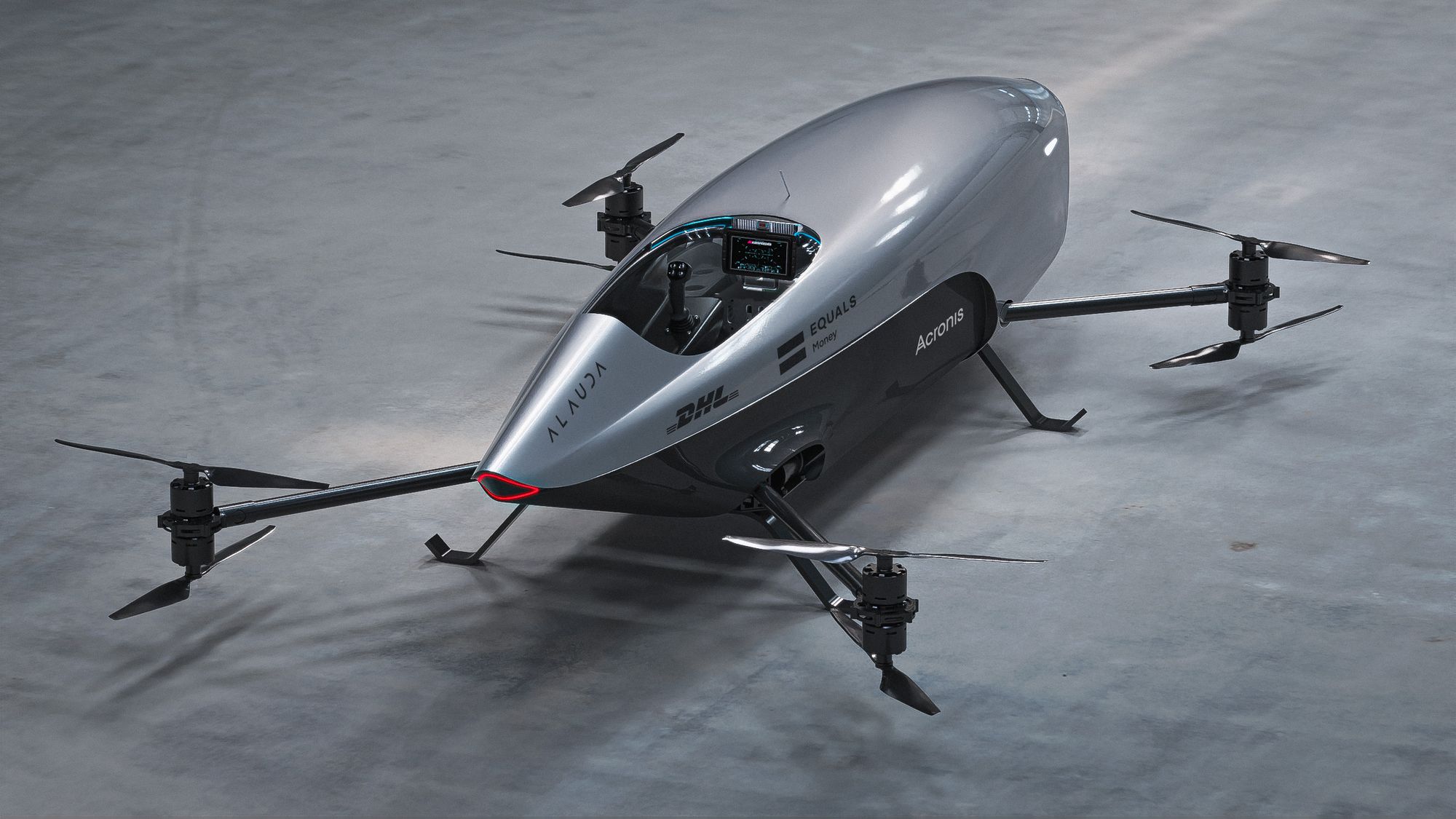
ALAUDA MK3
The ALAUDA MK3 is an electric flying race car developed by Alauda Aeronautics[1]. It is designed to be a full-sized, remotely-operated vehicle that combines elements of both automotive and aviation technology. It is the world's first flying electric racing car. The Alauda Mk3 is a subscale uncrewed racing eVTOL prototype that has a maximum speed of 250 km/h (155 mph) with eight electric propellers. The Alauda Mk3 has undergone historic first flights in preparation for the world's first racing series for electric flying cars. The mk3 is capable of accelerating 0-100 kmps in just 2 secound and climb upto 1,640 feet in the air.
The estimated delivery date and price for the Alauda Mk3 flying car is not available as it is not intended for commercial use. It is designed for racing and will be supplied to teams for the first races around electronically governed courses later this year.
AUTOGYRO DRIVE
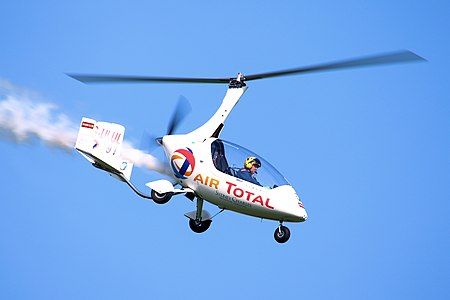
Autogyro Drive
$63,500
An autogyro (from Greek αὐτός and γύρος, "self-turning"), or gyroplane, is a type of rotorcraft that uses an unpowered rotor in free autorotation to develop lift. While similar to a helicopter rotor in appearance, the autogyro's unpowered rotor disc must have air flowing upward across it to make it rotate. Forward thrust is provided independently, by an engine-driven propeller.
It was originally named the autogiro by its Spanish inventor and engineer, Juan de la Cierva, in his attempt to create an aircraft that could fly safely at low speeds. He first flew one on 9 January 1923, at Cuatro Vientos Airport in Madrid. At the cruise speed of 45 mph, the Commander Elite 447 will use 3 gallons of fuel in one hour giving you a range of approximately 90 miles. Prices start at 1.5 million koruna (57,000 euros, $63,500), but they can reach four million koruna, depending on specifications.
DeLorean DR-7
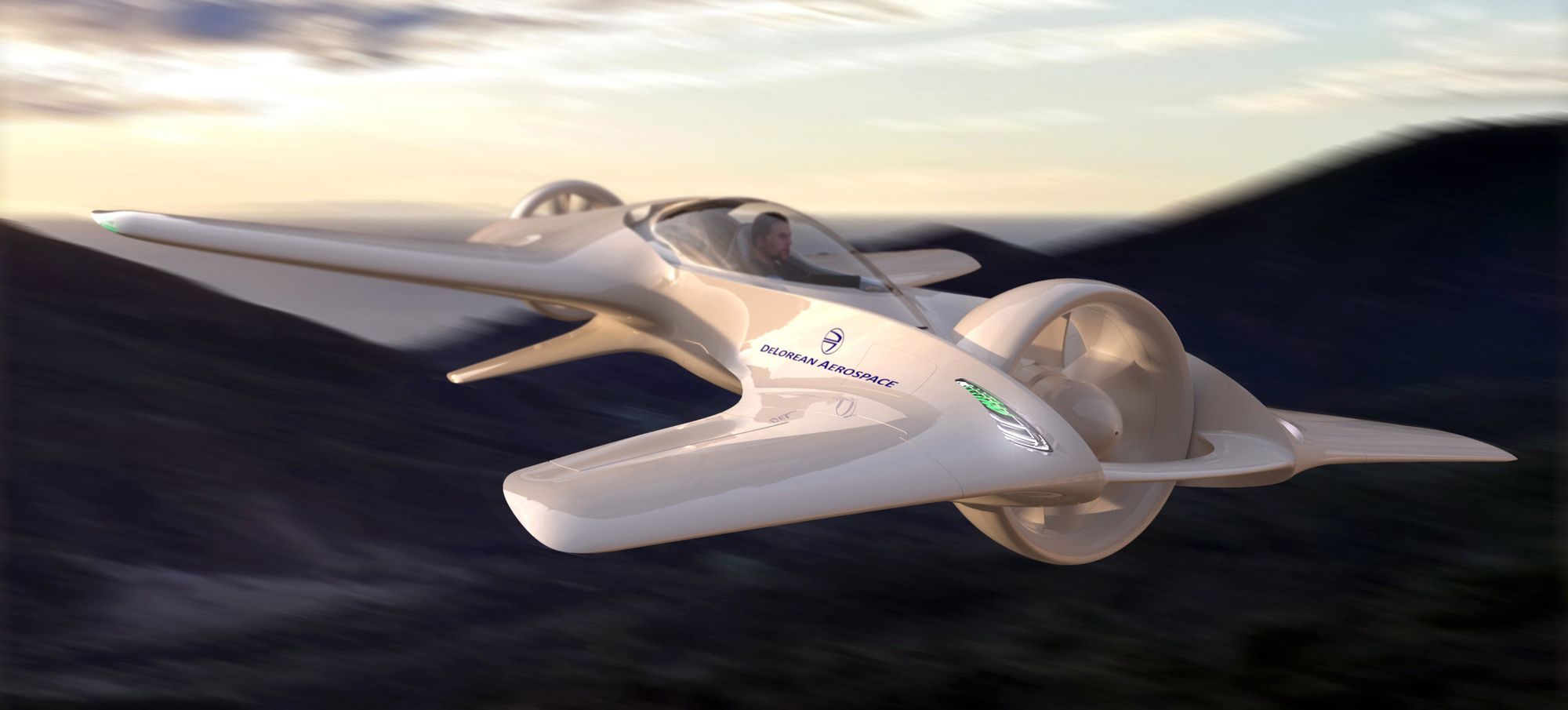
DeLorean DR-7
$250,000–300,000
The DeLorean Aerospace DR-7 would be a twin forward and rear tilt propeller flying car developed for personal use. The forward and rear propellers will be capable of 360 degree forward/back tilt. In vertical mode the DeLorean will be able to achieve Vertical Take-Off and Landing (VTOL).
The DR-7 will have a cruising speed of 241 km/h with a top speed of 389 km/h. At full speed the range will be 193 km. The DR-7 will carry two passengers in a tandem configuration. It will be 6 m long with a wingspan of 5.6 m. The wings will fold the vehicle to a 2.3 m width allowing it to fit in a garage.
DeLorean intends for the vehicle to be a high end flying car for commuting and personal travel. Costs are expected to be in the $250,000–300,000 range.
Alef Armada Model Zero
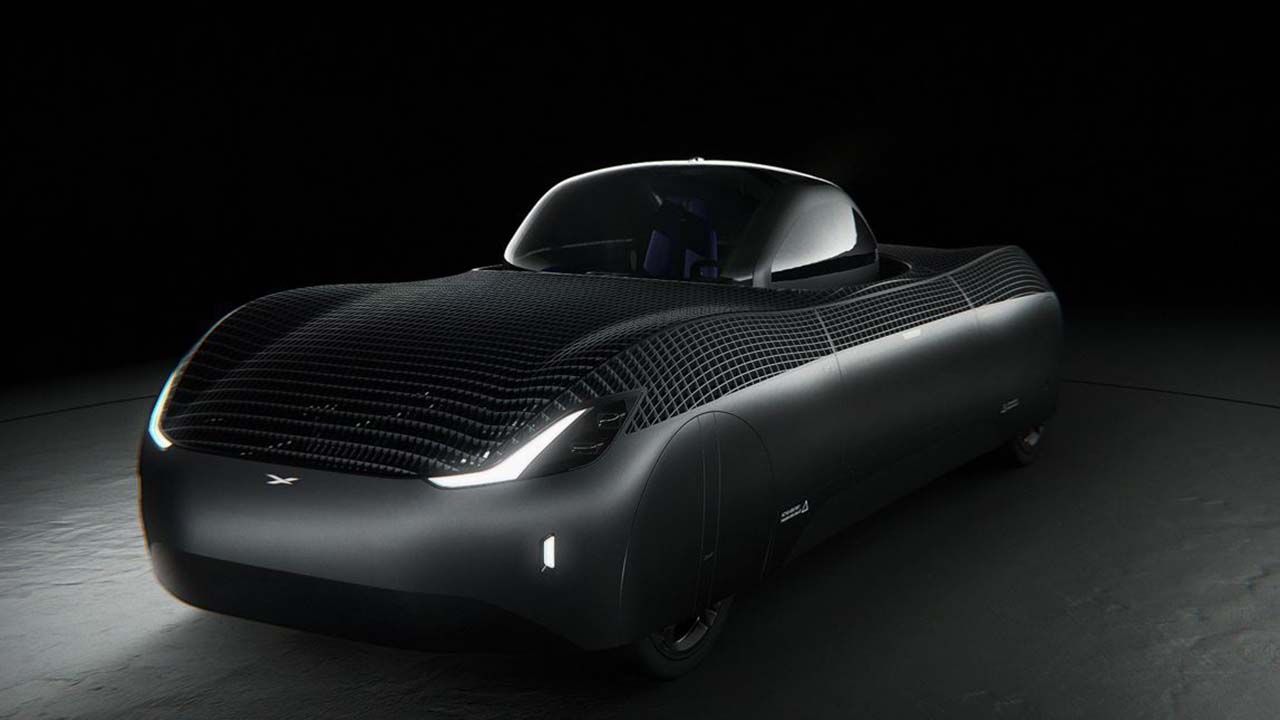
Alef Armada Model Zero
$300,000
The Alef Armada Model Zero can be driven on the road like a regular car or flown like a VTOL aircraft. The company expects the first deliveries will happen in the fourth quarter of 2025.
The car is powered by 100 percent electric propulsion, aligning with the growing trend of sustainable transportation. With a flying range of 110 miles (177 km) and a driving range of 200 miles (322 km), the vehicle offers both efficient air travel and extended road mobility. Alef touts the car's ability to avoid traffic, fly in any direction while giving a "cinematic 180 plus degree view for safe and enjoyable flight." Customers can preorder the vehicle, which can seat up to two people is expected to cost around $300,000.
Renault AIR4
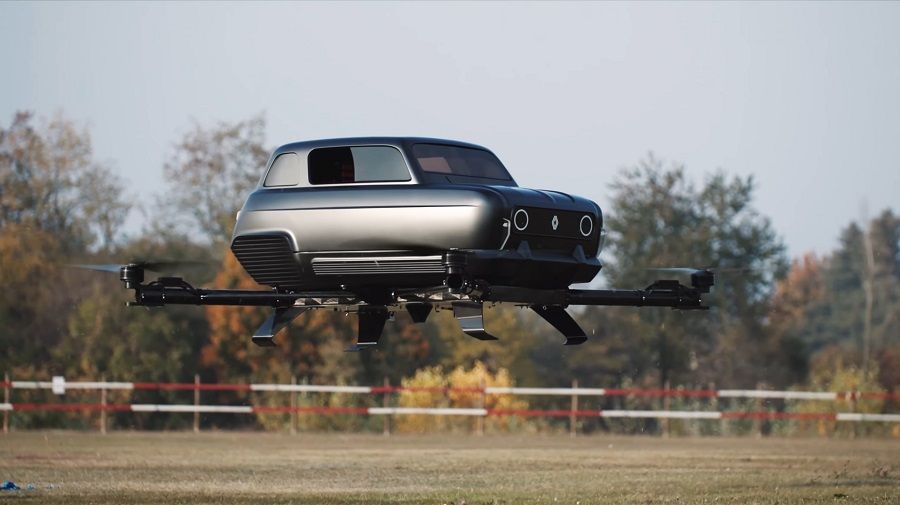
Renault AIR4
$4,361,236
The Renault AIR4 is a one passenger eVTOL multicopter aircraft with four propellers, four electric motors, a Renault 4 car body for the fuselage (made out of carbon fiber), powered only by battery packs and has four fixed landing struts. The AIR4 passenger multicopter has no wheels and has been flown successfully. The Renault AIR4 will be displayed at the Atelier Renault on the Champs Elysees in Paris (France) from Nov. 29, 2021 through the end of the year.
It is powered by 22,000mAh lithium-polymer batteries, which is enough for a horizontal top speed of 26m per second, with a 45deg inclination during flights, up to a maximum of 70deg. Renault claimed it can fly as high as 700m with a take-off speed of 14m per second, although this is restricted to 4m per second for safety reasons, with a landing velocity of 3m per second. Its propellers generate 95kg of vertical thrust each for a total of 380kg. The AIR4 is set at a retail price of $4,361,236 , and will be available for purchase in Bitcoin.
Terrafugia TF-X
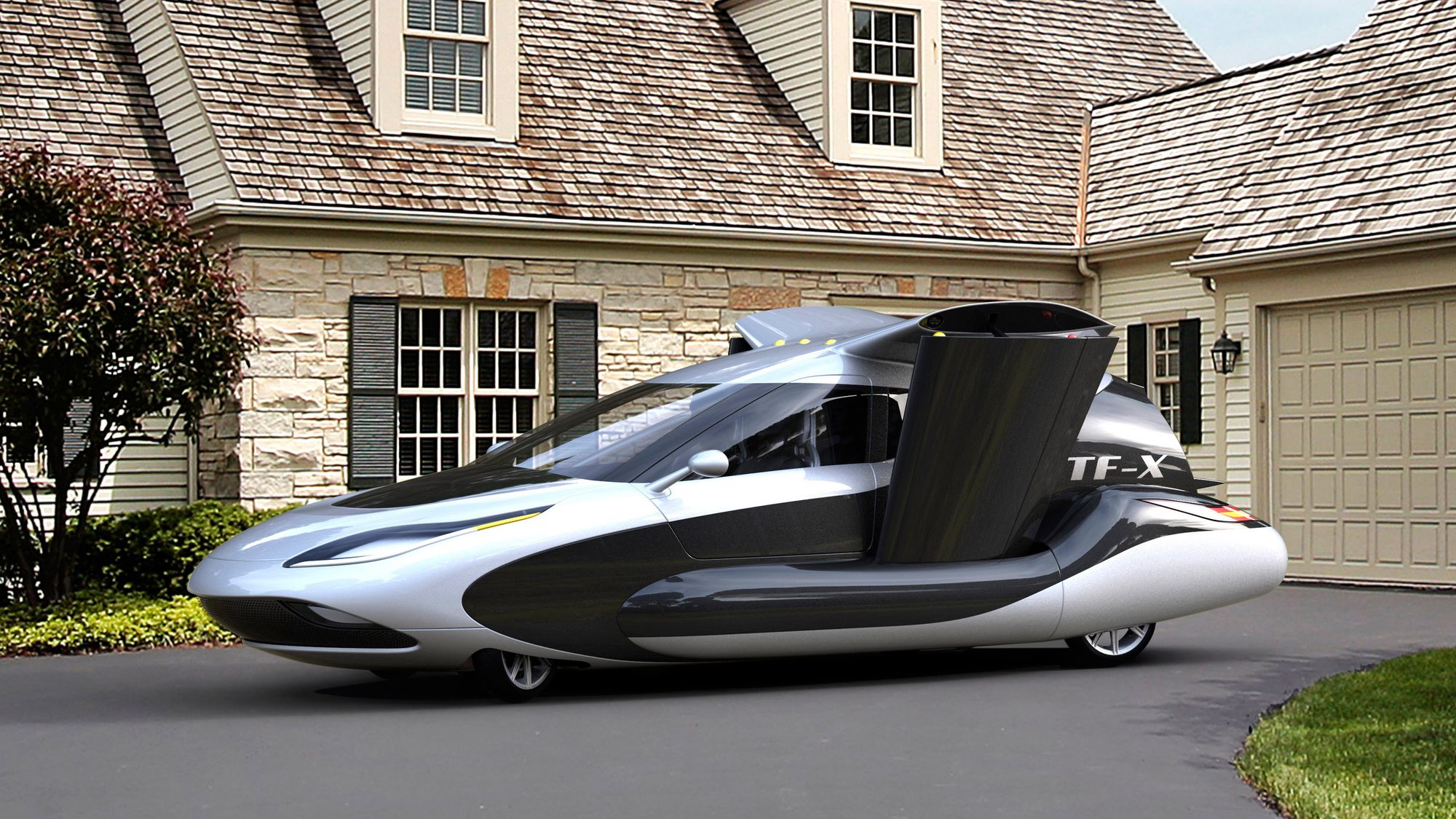
Terrafugia TF-X
$300,000
The Terrafugia TF-X is an autonomous flying car under development by Boston-based Terrafugia. The TF-X seats four passengers and uses an engine combined with two electric motors for propulsion. Powered by two plug-in hybrid 600-horsepower electric motors and a 300-horsepower fuel engine, the TF-X is planned to have a flight range of 500 miles (805 km) with a cruising flight speed of 200 mph (322 km/h) without the need to refuel or recharge.[1] Road speed is currently unknown.
Terrafugia started development of the TF-X in 2013 and the updated design of the exterior was done in 2014 by Vedran Martinek, an Automotive Designer from Croatia. Terrafugia claims that learning to drive the TF-X is likely to take five hours and will take substantially less time to learn how to safely operate than a traditional aircraft. Pricing is expected to be upwards of £200,000 (roughly $300,000). It was expected to hit the market at least six years after Transition (2023).
LILIUM
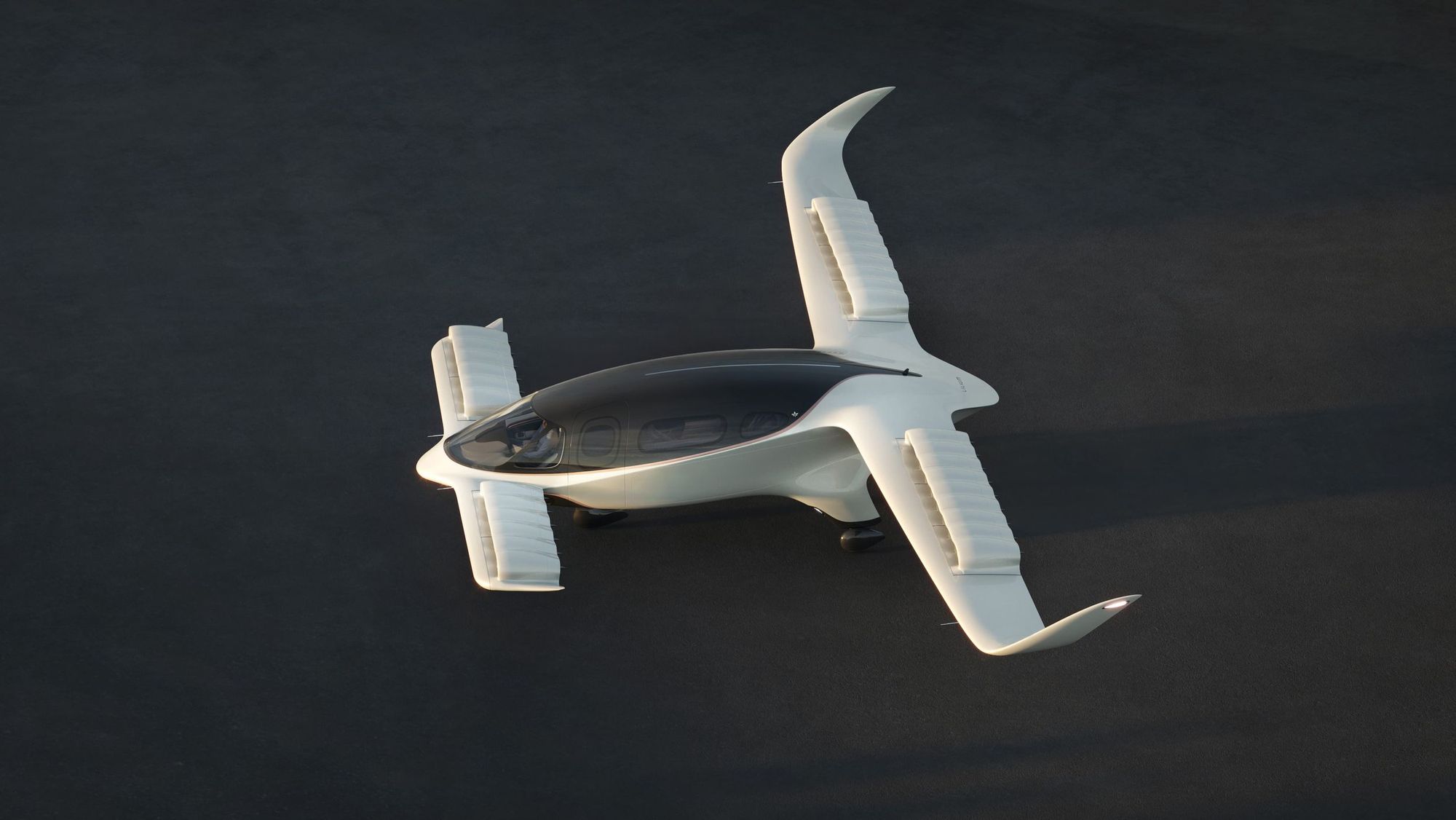
LILIUM
$4.5 million
The Lilium Jet is a prototype German electric vertical take-off and landing (eVTOL) electrically powered airplane designed by Lilium GmbH. A seven-seat production version is planned. The Lilium Jet uses multiple relatively small ducted propellers driven by electric motors to provide lift during take-off and landing, as well as thrust during the cruise phase. It is powered by 36 electric motors, six on each of the two front canards and twelve on each rear wing. The motors are installed above twelve tiltable rear flaps.
The Lilium Jet has a maximum physical range of 250+ km / 155+ miles (service range + reserves) and a cruise speed of 280 km/h / 175 mph. The Lilium Jet is capable of reaching a cruise altitude of 3,000 m / 10,000 ft. In 2023, the production of the LILIUM flying car will commence, with an initial batch of 25 units set to be manufactured. In a recent article, Lilium announced that the initial price tag for a Lilium Jet is in the neighborhood of $4.5 million.
Rules and business
Flying cars will require two licenses, one for the ground and one for the air. On the ground, one will need a motorcycle or automobile driver's license, while in the air, one will need a pilot's license. The Federal Aviation Administration (FAA) is the governing body in the US for all aircraft, including flying cars. To fly, one simply registers the flying car with the FAA and is given an N number, which serves the same function as a car’s license plate. Since flying cars operate the same in the air as other aircraft, the FAA treats them exactly the same way.
The global flying car market is expected to be valued at $215.54 million in 2025 and is projected to reach $3,804.18 million by 2035, registering a CAGR of 34.1% . While flying cars could be commercially available in 2024, regulations for managing the new form of air traffic will be a concern.
conclusion
Flying cars may not be accessible to everyone, but they could have an application in carrying freight and packages. The concept of flying cars is not only exciting but also has the potential to revolutionize the way we travel and transit goods.




